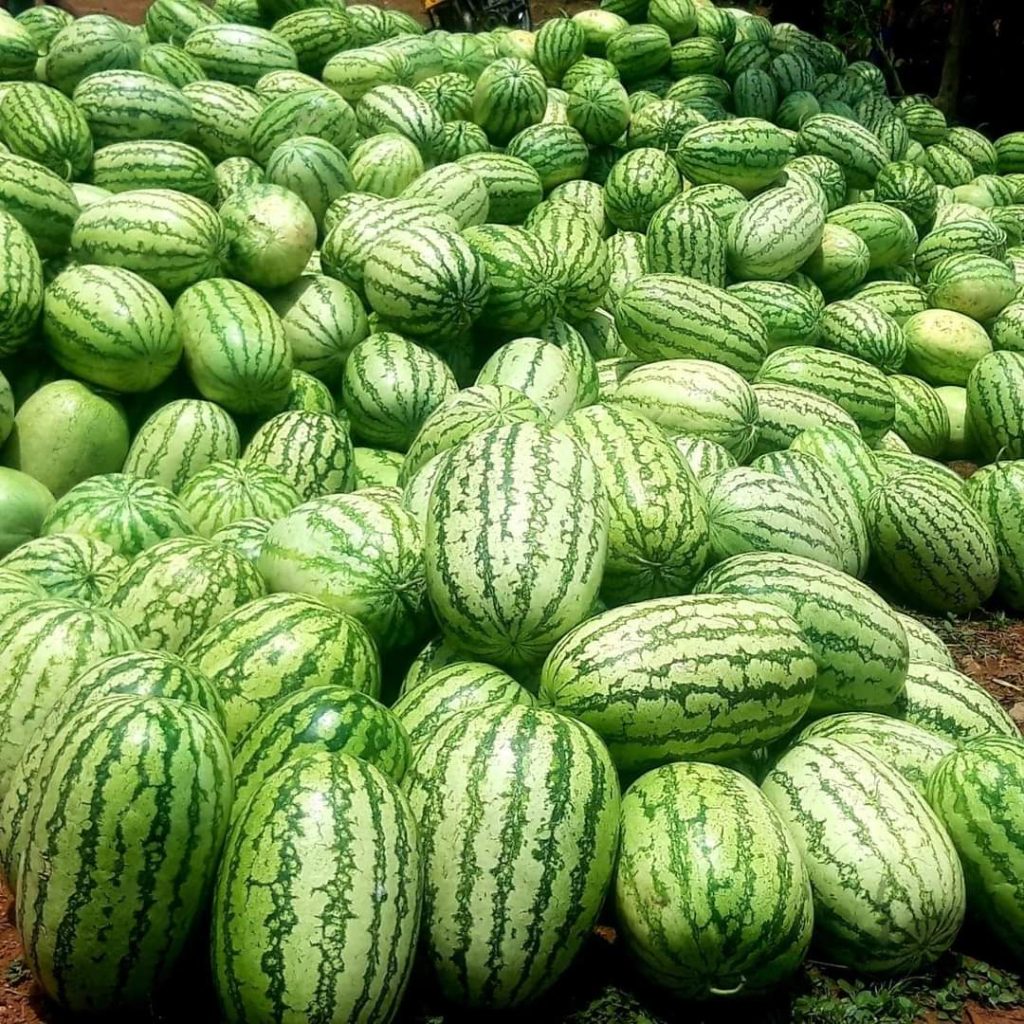Watermelon (Citrullus lanatus) farming is a lucrative venture in Nigeria, promising high returns on investment for farmers. Whether you’re an experienced agriculturalist or a novice, understanding the nuances of watermelon cultivation can lead to fruitful outcomes. In this comprehensive guide, we’ll delve into everything you need to know to cultivate watermelons successfully.
Table of Contents
- Introduction
- History of Watermelon
- Cultivation Practices
- Site Selection
- Varieties
- Land Preparation
- Planting Techniques
- Irrigation
- Fertilization
- Pest and Disease Control
- Harvesting Tips
4. Economic Viability of Watermelon Cultivation
- Constraints and Challenges
5. Marketing Strategies
6. Uses of Watermelon
7. Other Related Articles
8. References
1. Introduction
Watermelon, a vine-like flowering plant, produces juicy, sweet fruits cherished by people worldwide. Renowned for its thirst-quenching properties, low-calorie content, and rich nutritional profile, watermelon holds a special place among health-conscious consumers. Let’s embark on a journey to explore the art of watermelon farming.
2. History of Watermelon
Belonging to the family Cucurbitaceae, watermelons are classified as pepo berries.
With a smooth, green rind and a sweet, red or pink interior teeming with seeds, watermelons mature within a year.
Characterized by vigorous growth, watermelon vines flaunt large crinkled leaves once established.
3. Cultivation Practices
Site Selection
Thriving in hot and dry climates, watermelons flourish, with Northern Nigeria being particularly favourable.
However, cultivation is feasible nationwide, with optimal planting periods aligning with the start or end of the rainy season.
Early-season planting in May for the North and March for the South is recommended, with adequate irrigation being paramount, particularly in arid regions.
Varieties
Choosing suitable varieties based on location and market demand is crucial.
Popular choices include “Crimson Sweet,” “Sugar Baby,” and “Charleston Gray.”
Land Preparation
Land clearance, including the removal of grass and debris, is essential.
Well-drained sandy loam soil with a pH range of 5.5–7 is preferred, with raised rows (hills) facilitating optimal drainage and heat retention.
Planting
Initiating watermelon seeds in pots before transplanting is advisable.
Plants should be spaced approximately 2 feet apart within a 5-foot-wide hill, with consistent watering until fruits develop being imperative.
Irrigation
Ensuring a steady water supply, especially in Northern regions, is crucial for successful cultivation.
Fertilization
The application of balanced fertilizers aids in enhancing soil fertility, with continuous monitoring of nutrient levels throughout the growing season being recommended.
Pest and Disease Control
Combatting common pests such as aphids, cucumber beetles, and squash vine borer moths, along with diseases like powdery mildew and blossom-end rot, requires strategic employment of pesticides and preventive measures.
Harvesting
Harvesting ripe watermelons involves identifying signs such as a dull rind colour, a hollow sound upon tapping, and a sweet aroma, with careful handling being essential to prevent damage.

4. Economic Viability of Watermelon Cultivation
Watermelon farming boasts significant profit potential, driven by the increasing prevalence of overweight and obesity issues.
With its rich vitamin content, including vitamins A and C, and potassium, watermelon offers lucrative prospects for farmers, with rampant growth once established further enhancing its economic viability.
5. Marketing Strategies
Exploring various marketing channels, including local markets, supermarkets, and wholesale buyers, is crucial, with attention to attractive packaging further bolstering sales.
6. Uses of Watermelon
Watermelon serves various purposes, ranging from fresh consumption as a thirst-quenching fruit to being an ideal option for weight loss due to its low-calorie content, coupled with its abundance of vitamins and associated health benefits.
Conclusion
Watermelon farming holds the promise of sweet rewards for diligent farmers. With the right knowledge and practices, cultivating watermelons can yield bountiful harvests, ensuring the satisfaction of both farmers and consumers alike. Enjoy the fruits of your labour and revel in the sweetness of success! 🍉🌱



